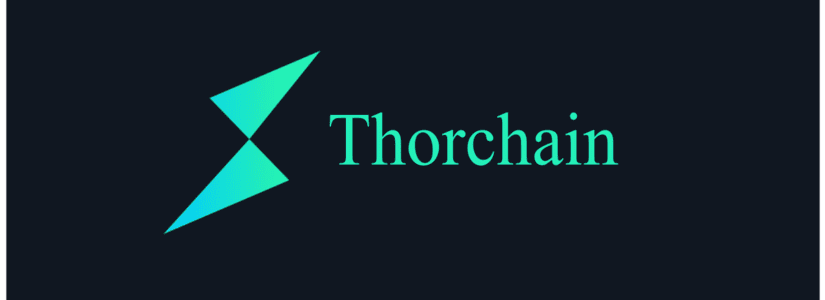The blockchain ecosystem has given rise to a variety of tools and solutions. However, this expansion has been hindered by several technical limitations, with the lack of interoperability between chains being one of the most complex challenges.
With the constant development of new digital assets and various dApps, the ability to transfer value and data across different networks has become increasingly limited and, in many cases, cumbersome. This is where THORChain enters the scene. This decentralized protocol allows users to perform asset swaps across chains directly, without relying on third parties. Its design aims not only to overcome the technical barriers that hinder industry growth but also to unlock new possibilities for the DeFi ecosystem.
What is THORChain?
THORChain is a decentralized liquidity protocol designed to enable asset swaps between different blockchains. Unlike traditional decentralized exchanges (DEX), THORChain is chain-agnostic, meaning it allows swaps across different blockchains without relying on centralized intermediaries.
The primary function of THORChain is to solve the problem of liquidity fragmentation across various blockchain networks, creating a unified environment where assets can be exchanged efficiently and reliably. To achieve this, the protocol relies on mechanisms such as incentivized liquidity pools, staking, and a unique “bonding” model that facilitates cross-chain asset swaps.
How THORChain Works and its Architecture
THORChain is structured as a multi-layer network that works together to ensure interoperability between blockchains and facilitate decentralized asset swaps.
Liquidity Pools and Cross-Chain Swapping
At the core of THORChain are liquidity pools, which enable asset swaps between different blockchains. These liquidity pools consist of funds from various native assets of different blockchains. Users can add liquidity by providing both native assets and RUNE, the network’s token. In return, liquidity providers receive a share of the transaction fees generated within the pool.
Cross-chain asset swapping is achieved through a “cross-chain swapping” model, a mechanism that uses smart contracts to autonomously execute the operation without intermediaries. This ability to facilitate direct exchanges between different blockchains sets THORChain apart from traditional DEXs, which only allow swaps within the same blockchain ecosystem.
The Role of Validators
THORChain’s network is secured by validators, who are responsible for validating transactions and maintaining the integrity of the system. Validators must stake RUNE as collateral to ensure honest behavior. This staking model aligns validators’ incentives with the proper functioning of the network, as any attempt to manipulate transactions could result in the loss of their funds.
Bonding Architecture
THORChain’s architecture also relies on the concept of “bonding.” Bonds are a way to ensure that assets are properly swapped between different blockchains. In this process, assets on one blockchain (e.g., Bitcoin or Ethereum) are secured within THORChain’s protocol through RUNE staking. This bonding ensures that assets are backed by the liquidity provided within the system.
When a user performs a swap between two blockchains via THORChain, the system ensures that the amounts of assets involved are accurate and that there are no discrepancies during the exchange process. This is achieved through smart contracts that operate within liquidity pools and automatically manage cross-chain transactions.

The Integration of Bifröst, Yggdrasil and Aesir
THORChain leverages additional protocols to enhance its network’s interoperability and scalability:
- Bifröst: This protocol is responsible for interoperability between different blockchains. Bifröst enables transactions and assets to move from one blockchain to another without relying on centralized intermediaries or fragile bridges.
- Yggdrasil: This protocol handles network scalability, allowing the system to handle higher transaction volumes as it grows. Yggdrasil optimizes load distribution among nodes and ensures the network maintains efficient performance even with increased activity.
- Aesir: Aesir is crucial for network governance. Through Aesir, network participants can vote on proposals for changes and updates, ensuring that the network’s evolution is decentralized and community-driven.
How Does THORChain Ensure a Secure Environment for Users?
Transparency is a key factor in THORChain’s security. As an open-source protocol, anyone can audit the code and transactions executed on the network. This fosters trust within the community and allows for constant review by developers and users, ensuring the system remains free of vulnerabilities or flaws that could compromise the security of funds or transactions.
In summary, THORChain has integrated a set of technical, economic, and transparency measures to guarantee a secure and reliable system, protecting both users and the funds operating within the network.

RUNE: What is it and What is it Used for?
RUNE plays a central role in the network, being essential for its operation and security. Its main purpose is to serve as collateral within the validation system, as validators must stake RUNE to operate and validate transactions.
Additionally, RUNE is the base asset in THORChain’s cross-chain swap system. Unlike other protocols that require specific asset pairs, RUNE is used as the common token that facilitates swaps between different blockchains, enabling operation without centralized intermediaries.
RUNE also has a central role in providing liquidity within the ecosystem. Users who provide liquidity to pools, whether with the native token or other assets, receive rewards in RUNE, encouraging participation and ensuring sufficient liquidity is available.
Finally, RUNE is involved in protocol governance. RUNE holders have a say in decision-making about the network’s future development, including protocol updates, fee structure changes, and other decisions.
Considerations When Investing in RUNE
Before investing in RUNE, several factors should be considered. The token plays a fundamental role in the protocol, being used for staking, liquidity, and governance. Investors can earn returns through staking, but these are subject to market volatility. Additionally, RUNE’s value is directly linked to the success and adoption of THORChain, so its performance will depend on the network’s ability to scale, attract liquidity, and differentiate itself from competitors.
Despite growth opportunities, it is important to consider risks such as volatility, competition, and protocol security. The network must also handle an increasing volume of transactions without compromising performance. Therefore, it is necessary to be as informed as possible before making a decision. While this protocol offers promising advantages and tools, it is always essential to consider all variables that could influence its performance.
Conclusion
THORChain presents an innovative proposal for the industry, standing out for its focus on interoperability between different blockchains and its decentralized model. The protocol not only aims to solve liquidity and fragmentation issues but also offers scalable, secure, and efficient solutions for cross-chain asset swaps. This positions it as a crucial component for the future of blockchain interoperability.
THORChain is a project with high potential, both for developers seeking robust interoperability infrastructure and for investors interested in a token with real applications within a growing ecosystem












